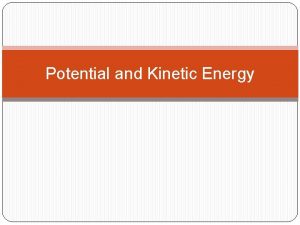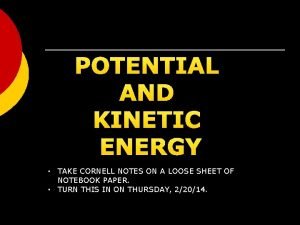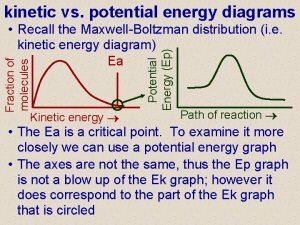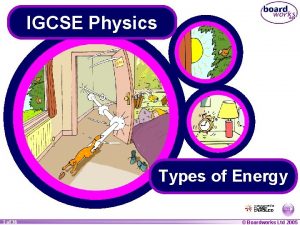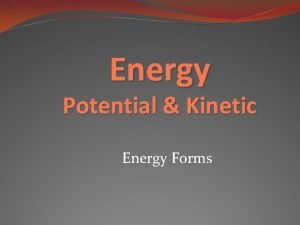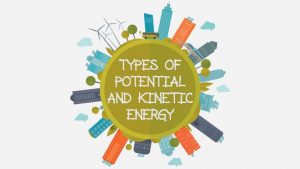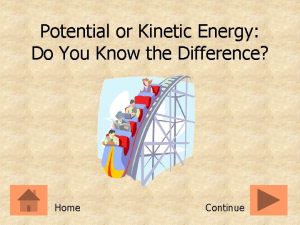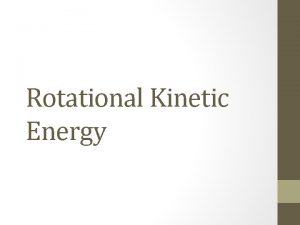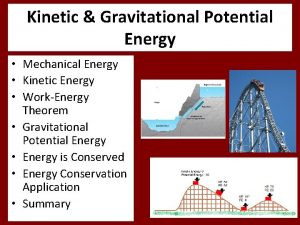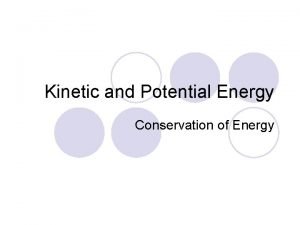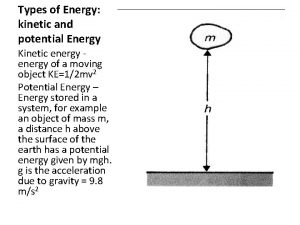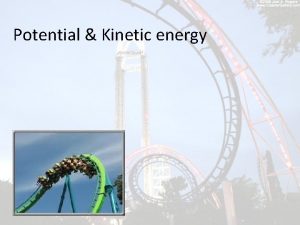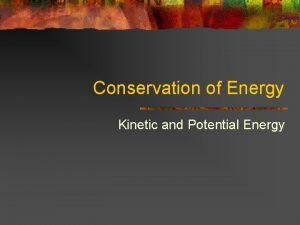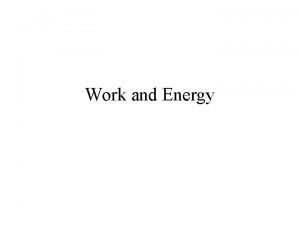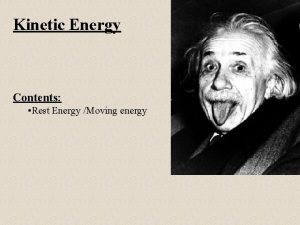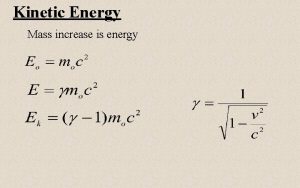Potential Versus Kinetic Energy Potential Energy l l




















- Slides: 20

Potential Versus Kinetic Energy Ø Potential Energy l l Energy of position Stored in chemical bonds Ø Kinetic Energy l l Energy of motion Released when chemical bonds are broken

Plankton versus Nekton Ø Plankton l l Weak swimmers Ride the ocean currents Ø Nekton l l Strong swimmers Can swim against the currents

Plankton Arrow worm Copepod Cyanobacteria (P/S) Fish eggs

Phytoplankton: What are they? Organisms in the water column that are capable of photosynthesis Diatoms • Important Primary Producers Dinoflagellates • Red Tides

Zooplankton Chaetognaths or arrow worms Copepods

Zooplankton Cnidarians – “True Jellyfish”

Water or H 2 O Ø Hydrogen Bonds? l Weak attraction between polar molecules

Liquid Water versus Water Vapor Ø As temperature increases the rate of molecular movement? increases

Density = Density of Water Warm Water Cold Water Weight Volume The same number of molecules. The molecules are closer together and occupy less space.

Density = Weight Volume Warm Water A Ø The number of water molecules in A and B is the same. Ø The weight of A and B are the same Ø Which is denser, A or B? Why? Cold Water B “B” or the cold water is denser since it weighs the same “A” but the molecules occupy less space

Factors That Effect Density Ø As temperature increases, density? decreases Ø As salinity increases, density increases (due to the addition of more dissolved material)

The Pycnocline Ø A zone of rapidly changing ? Density

The Thermocline Ø A zone of? Rapidly changing temperature Ø Note there is no thermocline at high latitudes since the surface water remains cold year round

Thermocline Pycnocline

The Three-Layered Ocean Thermocline Add the arrows in your diagram Warm thin surface layer The main thermocline is in the intermediate layer

Solution = Solute + Solvent Ø Solute = ? “ Stuff” to be dissolved Ø Solvent = ? What you dissolve “stuff” in l Water: The Universal Solvent What is the percentage of Solute in: 1. Solution A? 10% 2. Solution B? 20% 3. What is the percentage of 4. Solvent in 90% 1. Solution A? 80%

The Earth Rotates to the East Ø One revolution every? 24 hours Ø The Earth is widest at The equator Ø Water at the equator appears to flow west

The Coriolis Effect Ø Northern Hemisphere l Objects deflected to the? right of their intended direction Ø Southern Hemisphere l Objects deflected to the? left of their indented direction Hot air rises – Cold air sinks

Earth Moon Forces Ø Gravity Pulls ocean toward moon Ø Centrifugal force l Opposite of gravity Pushes water away from moon

Mixed semidiurnal Semidiurnal Diurnal
 Gravitational kinetic energy equation
Gravitational kinetic energy equation Gravitational potential energy vs kinetic energy
Gravitational potential energy vs kinetic energy Potential vs kinetic energy
Potential vs kinetic energy Definition of kinetic energy
Definition of kinetic energy Spring potential and kinetic energy
Spring potential and kinetic energy Kinetic energy and potential energy formula
Kinetic energy and potential energy formula Formula of potential energy
Formula of potential energy Kinetic and potential energy
Kinetic and potential energy Potential and kinetic energy graphic organizer
Potential and kinetic energy graphic organizer Kinetic and potential energy
Kinetic and potential energy Kinetic energy examples
Kinetic energy examples Potential energy
Potential energy Potential and kinetic energy diagram
Potential and kinetic energy diagram Kinetic energy forms
Kinetic energy forms Potential energy
Potential energy Lesson 2 kinetic and potential energy
Lesson 2 kinetic and potential energy Is chemical potential or kinetic energy
Is chemical potential or kinetic energy Kinetic energy grade 7
Kinetic energy grade 7 Mechanical energy
Mechanical energy Is a flag blowing in the wind potential or kinetic energy
Is a flag blowing in the wind potential or kinetic energy Kinetic and potential energy: jumping frogs answer key
Kinetic and potential energy: jumping frogs answer key










